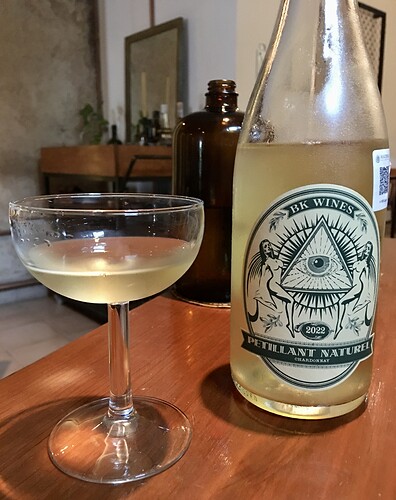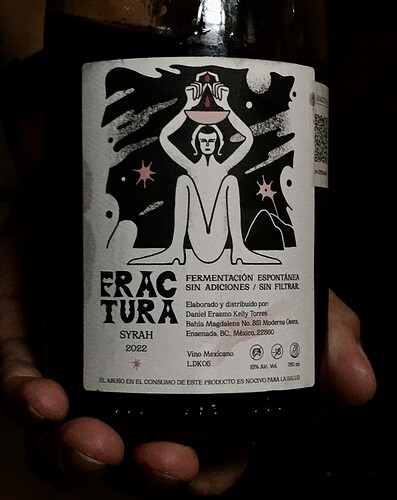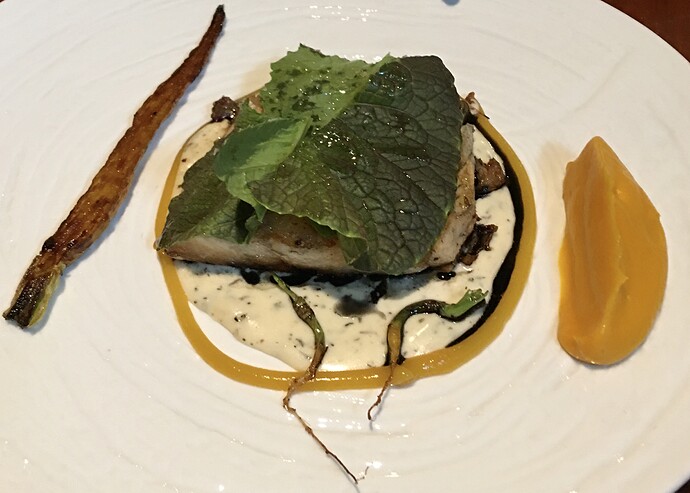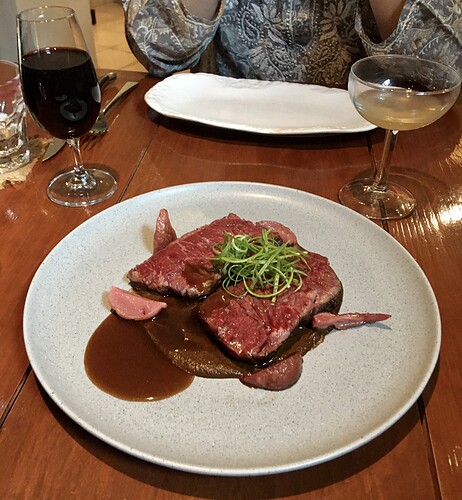[Raising hand…]
Put me down as “yes” to both your questions, for reasons Wes so eloquently stated in post #45 of this thread (particularly the third and fourth paragraphs).
Very fine restaurant opened here in Mérida, Agua Del Mar, with a focus upon Natural Wines. It’s a $$$ place which already makes people mad as restaurant scene evolving fast and locals not ok with the evolving price points.
But I made a nice little review of the place, explaining it’s pricey, and the Natural Wine haters (ANWE?) just tore the place to shreds. I was also a rube for even considering natural wines and of course I told a few folks to GFT.
The sparkler was a delight with bright fruit and balanced yeastiness. The glass of Syrah we both had with their interesting plating of Short Rib just screamed NW, and I don’t mean Cayuse!
Bottom dish was incredible Negro Tempura Camarones.
I’m not a natural wine basher, but I’m very sensitive to mousiness, so I avoid low sulfur wines unless I know they’re clean.
Case in point: I’ve eaten in a good new restaurant in the Hudson Valley twice in the last two weeks. The first time, I was tempted by a Czech wine they had on the list (I can’t turn down an oddball offering), but it was profoundly mousy. (The somm said it was funky and somewhat polarizing. The truth was it was very flawed for those of us who can perceive mousiness.) I opted for a minor French syrah instead, which was low sulfur but fine.
A week later I returned and ordered an alicante blend, again low sulfur. I didn’t ask for a taste this time, and it was slightly mousiness, but not bad enough that I couldn’t drink it.
My sense is that natural/low sulfur winemakers have become more attuned to mousiness, so it infects a smaller proportion of these wines now. But it’s still a significant risk factor – anecdotally, I’d say it’s on the order of TCA taint 10-20 years ago
There are two pathways for mousiness to be created - one is from brett and the other is during secondary fermentation, when pediococcus and lactobacillus may be present. If winemakers do not have their reds go through secondary fermentation, the chances are higher that this taint will appear…
Cheers
Now I’m really confused.
Like Glenn, I’m confused. If mousiness can be a byproduct of secondary fermentation, why are the chances lower of it occurring if a wine does not go through secondary fermentation?
During MLF, it is a byproduct of pediococcus and lactobacillus, which are less desirable LAB compared to oenococcus. The former 2 will be present in higher pH wines and wines with little to no added SO2 prior to primary fermentation.
Cheers
Well, that clears up everything.
I should also point out that lactic acid bacteria can remain in the wine for quite some time, including after Bottling. It is quite fastidious, and will continue to work its magic for quite some time given the right conditions. And one of those conditions would be low to no S02.
This reminds me so much of when “Organic” and “Biodynamic” were the new hot things. It took a while for winemakers to figure out best practices, so there was a lot of bad wines made, and sold, with the excuse built in (it’s Organic). Now being organic or biodynamic are almost expected of top flight wines. The natural wine movement is supposed to be all about the pure expression of “terroir”. Flaws are no more an expression of “terroir” then oak, SO2 or filtration, they are just another (if unintended) additive. As this movement matures you are seeing even its most ardent supporters less willing to over look the flaws and winemakers more able to avoid them. There are some amazing natural wines out there and some real crap trading on being natural because they need to sell it, even if it is crap, but as this mainstreams the crap will fall by the wayside.
You are completely off the mark, but thanks for participating.




